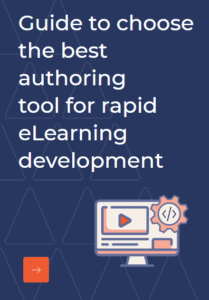Its’s that time of the year when Santa’s list is created, guest lists are finalized, addresses checked, decorations assembled. Time of festivity and joy, and here we are once again, eLearning providers doing what eLearning providers do, sharing our experiences, challenges solutions etc. through knowledge sharing.
But it’s the same eLearning isn’t it? So, what more does it offer now, in comparison with what it offered earlier? That would require some contemplation, some comparison and a bit of explanation, right? So, let’s take a quick look at the benefits eLearning offers in general.
- Cost Effectiveness - eLearning saves training cost, scheduling cost, and even the overall expenditure by not impacting the work schedules.
- Accessibility for All - While traditional training focuses on gathering the learners at one place on a scheduled date and time, and in case someone misses out then rescheduling is usually done when the next batch is trained. This often inconveniences the learners. eLearning solves this by allowing learners to learn at their convenience.
- Faster and Broader Outreach - Faster deployment, as a single course can be delivered across multiple devices, and web-based courses with translated versions can be easily used to train learners at different geographical locations at the same time.
- Saves Training Time - eLearning is often designed to consume less time, and not just that as learners can schedule their learning and it saves the time spent at assembling, settling in for training etc.
- Increases Productivity - Well-designed eLearning is said to greatly improve the overall performance and productivity too.
In today’s age (multi-device, Cloud, IOT, and more), eLearning has a lot more to offer and has been evolving with the changing times. Here are 5 (modernized) benefits of eLearning.
- Different Modes of Delivery
As described above, eLearning offers various options. From seamless and continuous delivery on devices of various sizes, to learning models of different types, eLearning adds flavour to the otherwise mundane training. Depending on the learning need eLearning can be broken down into chunks delivered as microlearning or as just-in-time learning, or just as mobile learning, as simulation or interactive and even as game-based learning and serious games. - Learning That Suits the Learners
eLearning today is all about customization, personalization. It is about giving the learners what they want, when they want and wherever they wish to partake in learning. eLearning gives the modern learners the mobility and flexibility they need. Open policies like BYOD allow the learners to learn on their personal devices while travelling or during down time, this in turn ensures that organizational tasks are met with maximum utilization of time too. - Effective Learning
Various kinds of eLearning allow the learners to explore, engage with the content rather than being just a passive act. eLearning can be multi-faceted, motivational and intriguing based on the audience and the learning strategy, and hence is often tends to be more effective than classroom training/ILT. - Quick Updates
While the updation of traditional learning depends on how updated the trainers/instructors are, eLearning tends to be updated from time to time (can be vendor specific) to keep up with the industrial standards, new policies etc. Not just that, with technologies like cloud in picture updates can be pushed out quickly and easily too. - Future-proofing
The learners and the learning patterns have changed, eLearning has become more of necessity. Advanced and innovative eLearning not only gives the organization an edge over the others, but also future-proofs learning, keeping it ready for most of the technological advances that are to come.
With the coming of new authoring tools, eLearning development too has become faster and cheaper. It allows to maintain the brand identity and relay consistent message across devices. A well- conceptualized and well-developed eLearning can be advantageous to the organization. However, the key lies in gathering information related to the learning needs and analysing them well before planning.
So, have you planned your eLearning strategy yet? Get in touch with our team of experts today, for improving the learning strategy in your organization.



